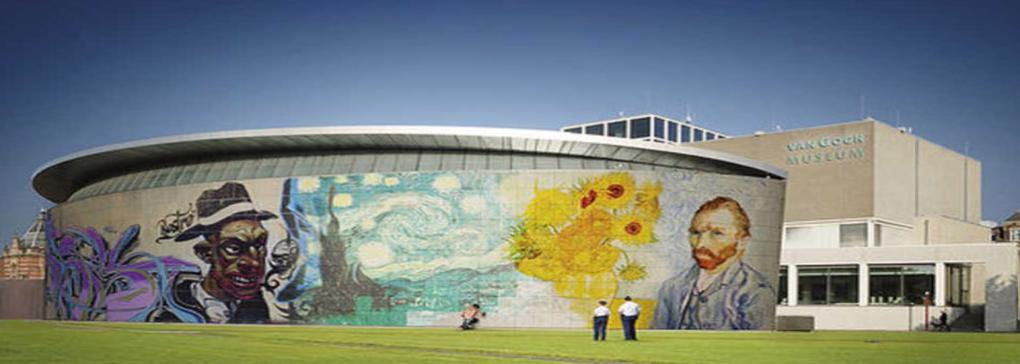Vincent and the Underworld

As regular readers know the Art4Life team have a love for Vincent Van Gogh’s fabulous art works. We’ve featured several blogs and some may remember we met his great great great grand daughter, Emily Koenders, at her gallery in rural Victoria last year. The thrill still a vivid memory. Today Jane tells us how popular Vincent is with the Underworld!
Recently I stumbled on an ABC documentary featuring 2 paintings stolen from the Van Gogh Museum in 2002. Two thieves scaled the walls, used sledgehammers to smash a window and then escaped via the same route. In less than 4 minutes the paintings were gone. As one of the thieves crashed to the ground, he left his cap behind!
With our Dutch Heritage, both my sister Caroline and I felt a stab in our hearts, a similar feeling to that of the French seeing Notre Dame go up in flames recently in Paris.
Did you know that Van Gogh’s paintings are the most highly sort after in criminal circles? Vincent would be aghast to know that the number of his works stolen outnumber those of any other artist. Sadly not for their beauty, historic or aesthetic value - it’s all about money. And I learned to my horror they are only worth about 20% of their real value on the black market.
There are 2 elements to this story - were the paintings recovered and which paintings were stolen?
I’ll keep you in suspense and talk about the paintings first. Both were quite small and possibly the reason why they were chosen.

View of the Sea at Scheveningen was painted in 1882. Regular readers would already know that Scheveningen is a popular beach in Holland as we have had two other blogs featuring this area. Anne has featured this beach in the painting with the missing whale! and also in a blog on the Scheveningen Kur-haus.
It is said that View of the Sea at Scheveningen was the first work where Vincent branched out in oils, on advice from his brother Theo. Typical Vincent, he set up his easel on a freezing, wet, windswept day - often scraping off gusts of sand and starting again. Although it may not be considered one of his outstanding works, it marks an important point in Vincent’s career.

The other painting, Congregation Leaving the Reformed Church in Nuenen, 1884–85, has a more personal connection to Vincent's family. His father preached in this church and the year after the painting was completed, his father passed away. As a tribute, Vincent added several mourning figures to the painting and gifted it to his Mother. Having said that, I read in a CNN article that he painted the work for his Mother, to cheer her up when she broke her leg. Either way it holds a special meaning for the family.
Now - were the paintings recovered? I’m thrilled to say they were but it took 14 years. The thief’s cap provided hair and DNA so he was eventually tracked down and with his accomplice went to jail, but sadly neither divulged the whereabouts of the paintings.
It’s a dangerous business selling stolen art - one potential buyer was gunned down on the day of the arranged sale, for a completely different reason.
In March 2003, Raffaele Imperiale, was identified as reportedly paying €350,000 for the two paintings. He ran a legitimate coffee shop in Amsterdam (coffee shops sell marijuana which is legal in Holland), but he quickly slipped into a life of crime as chief of a Camorra crime family - the Mafia of Naples.
The Italian police were after Imperiale for other crimes, so he fled to Dubai as there is no extradition treaty with Italy.
Interestingly he wrote a long confession of his crimes to Vincenza Marra, the public prosecutor, in Naples. In Italy if a criminal gives up stolen goods, they are usually guaranteed a reduced sentence.
I read on Artsy.com:
In September 2016, Italian police raided the house of Imperiale’s mother as part of an investigation into the cocaine-trafficking. They confiscated some $20 million in assets. And there, hidden between two walls and wrapped in cloth, were the two van Gogh paintings, missing frames but otherwise in good condition. Police in the Netherlands credited their Italian counterparts with recovering the works, and the pieces went on view for three weeks at the National Museum of Capodimonte in Naples, before being returned to Amsterdam.
Often art works are recovered but so badly damaged or almost impossible to restore. Thankfully, these paintings were in good condition, but it still took a further 2 years before they were re-hung on the walls of the Van Gogh Museum

I plan to be in Amsterdam later in the year - naturally the Van Gogh Museum is top of my list and I’ll be looking out for these two paintings and marvelling at their unexpected journey through Europe.
